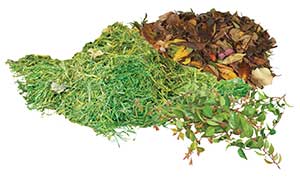Senate Bill 1383
California’s Short-Lived Climate Pollutant Reduction Strategy Effective January 1, 2022
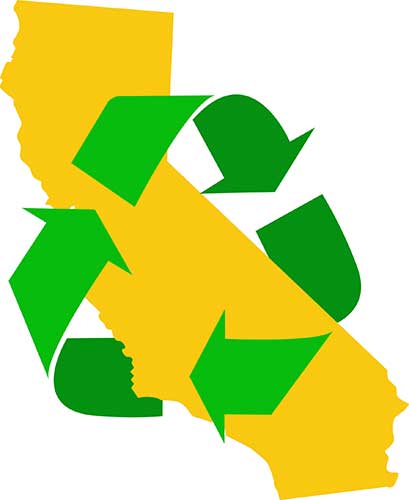 For more information regarding Senate Bill 1383, please visit: www.calrecycle.ca.gov/organics/slcp
For more information regarding Senate Bill 1383, please visit: www.calrecycle.ca.gov/organics/slcp
In September 2016, Governor Edmund Brown Jr. set methane emissions reduction targets for California (SB 1383 Lara, Chapter 395, Statutes of 2016) in a statewide effort to reduce emissions of short-lived climate pollutants (SLCP). The targets must:
- Reduce organic waste disposal 50% by 2020 and 75% by 2025.
- Rescue for people to eat at least 20% of currently disposed surplus food by 2025.
California is implementing statewide organic waste recycling and surplus food recovery. Starting in January 2022:
- All jurisdictions will need to provide organic waste collection services to all residents and businesses and recycle these organic materials.
- Some businesses must donate edible food to food recovery organizations with others starting in 2024.
 Reducing organic waste in landfills = equals less methane. Organics like food scraps, yard trimmings, paper and cardboard make up half of what Californians dump in landfills. Organic waste in landfills emits methane, a climate super pollutant 84 times more potent than carbon dioxide.
Reducing organic waste in landfills = equals less methane. Organics like food scraps, yard trimmings, paper and cardboard make up half of what Californians dump in landfills. Organic waste in landfills emits methane, a climate super pollutant 84 times more potent than carbon dioxide.
We Are Here to Help!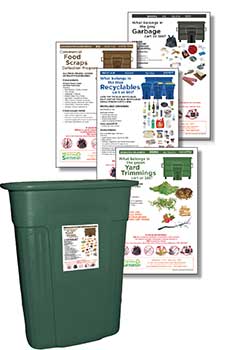
CONTACT US TODAY! OUR REPRESENTATIVES CAN:
- Visit your business to conduct waste assessments.*
- Make service suggestions.
- Help train employees and/or tenants.*
- Provide posters, service guides and internal collection containers.
*Social distancing protocols must be practiced.
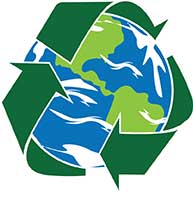 Proper Sorting Makes a Difference!
Proper Sorting Makes a Difference!
USE YOUR CONTAINERS TO PROPERLY SORT YOUR ORGANIC WASTE FOR:
- Compliance with California Regulations.
AB341, AB1826, and SB 1383. - A reduction in the amount of material going to the landfill which in turn will reduce greenhouse gas emissions.
Of the 39 million tons of waste disposed of in California landfills in 2018, one third was compostable organic materials. Anaerobic decomposition of organic materials in landfills produces methane (CH4), a greenhouse gas that contributes to pollution and global warming. Composting organic material and reduces greenhouse gas emissions.
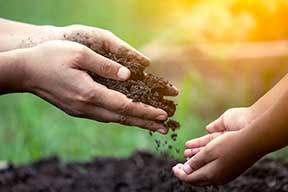
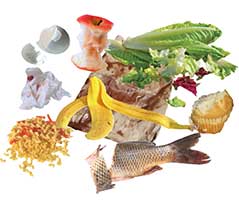 Prevent Food Waste
Prevent Food Waste
Californians throw away nearly 6 million tons of food waste each year. This equals 18% of all the material that goes to landfills.
FIND GENERAL FOOD WASTE PREVENTION TIPS AT:
FOOD WASTE PREVENTION TIPS FOR FOOD GENERATING COMMERCIAL CUSTOMERS
- Use perishable produce quickly.
- Shop from your fridge and pantry before buying more food.
- Store all food properly. (Typically, below 40 degrees Fahrenheit for refrigerators and 0 degrees Fahrenheit for freezers, consult your local health code requirements.)
- Track inventory to prevent over-ordering and spoilage.
- Keep your storage equipment in good working order.
- Prepare for power loss by having a back-up power plan.
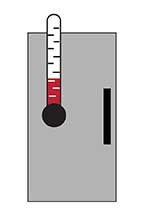
GIVE EDIBLE LEFTOVERS TO EMPLOYEES OR DONATE EDIBLE FOOD TO A CHARITY OR FOOD BANK.
- Milpitas Food Pantry – 408-946-5564
- Second Harvest Food Bank of Silicon Valley – 408-266-8866
- www.calrecycle.ca.gov/Organics/Food/Donation/
- Click here for a list of organizations in Santa Clara County that accept food donations.
SB 1383 will require commercial food generators to donate edible food for human use. Click here for more SB 1383 information.
Did You Know?
YOU WON’T BE SUED FOR DONATING LEFTOVER FOOD.
The Bill Emerson Good Samaritan Food Donation Act passed in 1996 protects restaurants from civil and criminal liability should a recipient get ill or hurt as a result of consumed donated food. Donors are only culpable in cases of gross negligence or intentional misconduct. SOURCE: www.EPA.gov
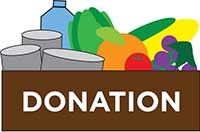
Does a Landscaping Company Off-Haul Your Yard Trimmings?
PLEASE LET US KNOW!
- The State requires businesses to provide written documentation from the landscaper that the material is being hauled to a facility that composts it for AB1826 compliance. (FYI – The Milpitas Sanitation Yard Trimmings collection program takes the material to a qualifying facility)
- A required form is available on our website.
- Click here for more information about the requirement. (Section B-Business; question 49)
